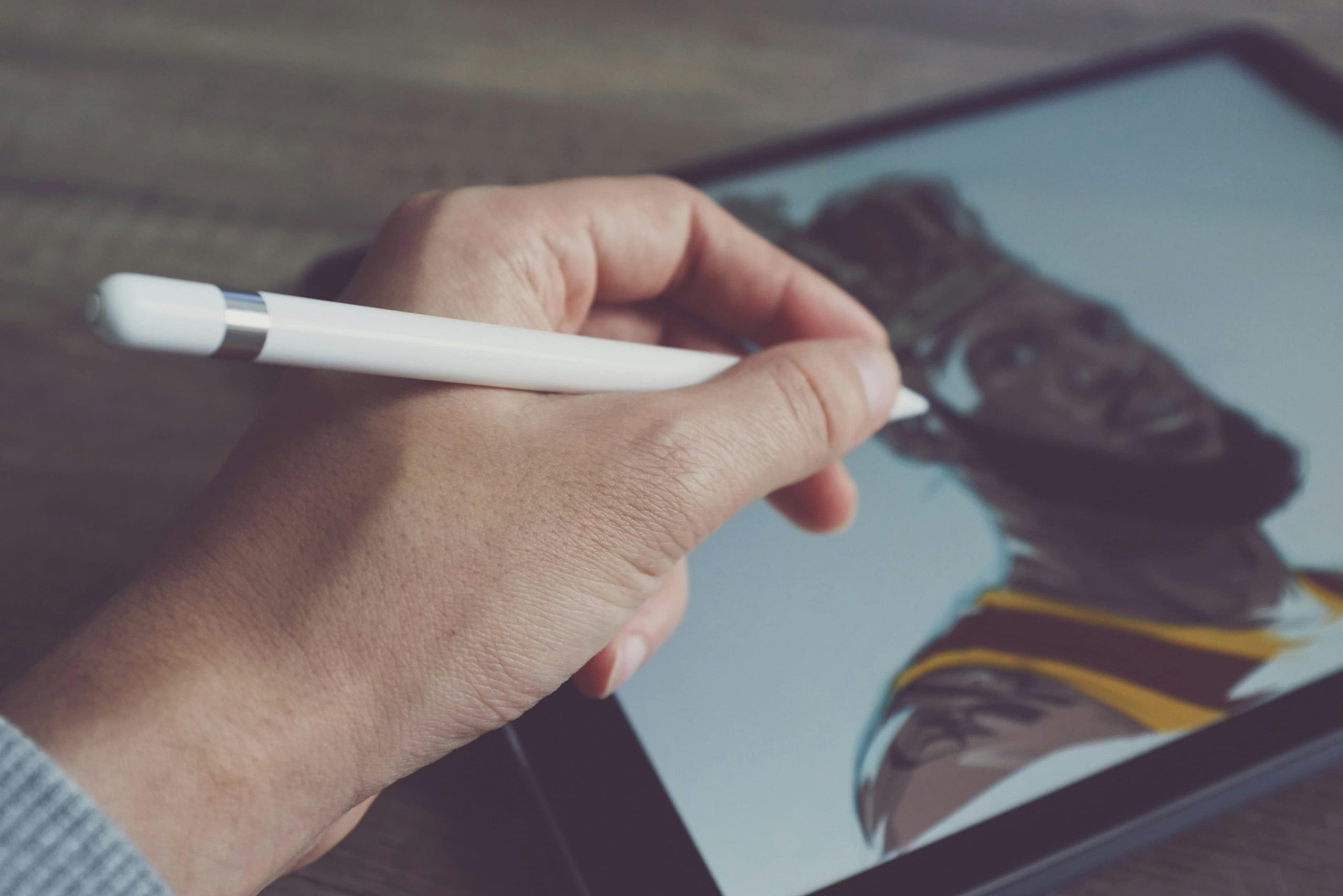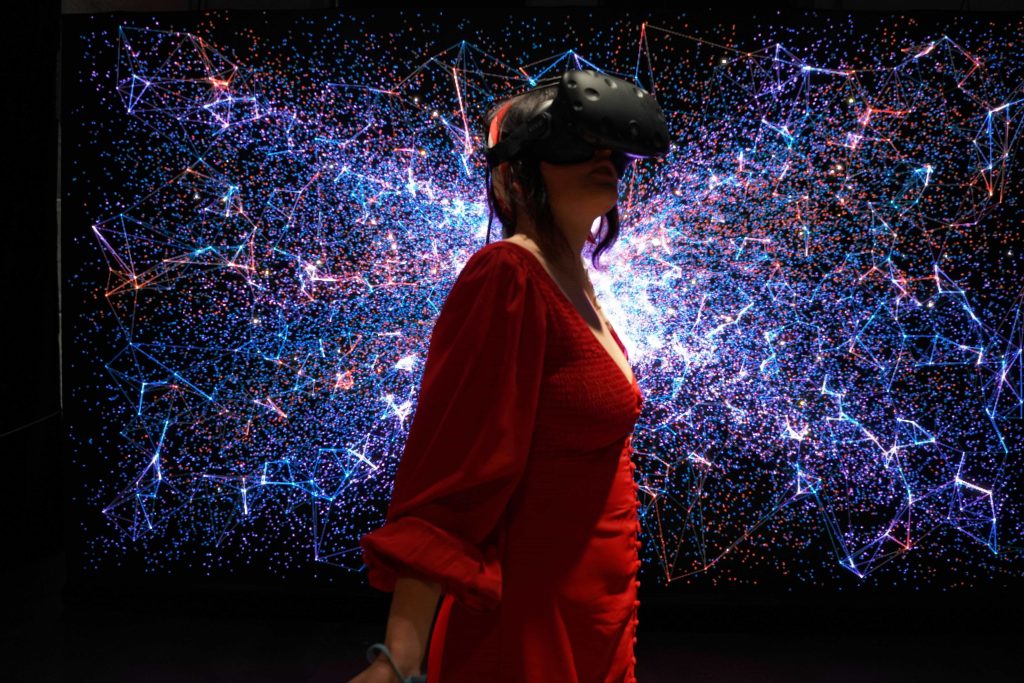
31 Mar The Future of Digital Art Exhibitions: Predicting Trends and Evolutions
The Future of Digital Art Exhibitions
Digital art exhibitions have transformed the way audiences experience and engage with art. With advancements in technology, these exhibitions have evolved from static digital displays to fully immersive and interactive environments. The current landscape of digital exhibitions showcases a growing interest in virtual reality (VR), augmented reality (AR), and AI-driven art experiences. As digital platforms continue to develop, they offer new opportunities for artists, curators, and audiences to connect in ways that were previously unimaginable. This article explores the key trends and technological advancements shaping the future of digital art exhibitions and how they will redefine artistic expression and audience interaction.
Technological Advancements Driving Change
The evolution of digital art exhibitions is largely influenced by rapid technological progress. These advancements are enhancing the way art is created, curated, and displayed, leading to a more engaging and immersive experience for audiences worldwide.
Enhanced Immersive Technologies
Virtual Reality (VR) and Augmented Reality (AR) are at the forefront of revolutionizing digital art exhibitions. VR allows users to enter entirely digital worlds where they can interact with art pieces as though they are physically present. AR, on the other hand, overlays digital art onto the real world, enabling audiences to experience creative works in everyday environments. The emergence of Mixed Reality (MR) and spatial computing is further pushing the boundaries, blending physical and digital spaces seamlessly and making art more interactive and multi-dimensional.
Advancements in Display Technologies
The development of high-resolution and dynamic display systems is improving how digital art is presented. OLED, micro-LED, and e-ink displays provide richer colors and greater energy efficiency, allowing for more vibrant and sustainable exhibitions. Additionally, holographic and volumetric displays are making it possible to showcase 3D artworks without the need for special headsets. These technologies not only enhance visual impact but also make digital exhibitions more accessible to a broader audience.
Artificial Intelligence and Machine Learning
AI and machine learning are becoming integral to the creation and curation of digital art. AI-generated art, powered by deep learning algorithms, is opening new possibilities for artistic expression, allowing machines to collaborate with human artists. Furthermore, AI-driven recommendation systems can personalize exhibition experiences, tailoring content based on user preferences and behavior. This makes art more engaging and relevant to diverse audiences.
5G and Cloud Computing
The implementation of 5G technology and cloud computing is eliminating many of the technical limitations associated with digital exhibitions. High-speed connectivity enables seamless, real-time streaming of high-resolution artworks, allowing audiences to explore exhibits without lag or disruption. Cloud-based platforms facilitate collaborative exhibitions where artists from different parts of the world can contribute to a single digital space, fostering greater global artistic collaboration.
Evolving Exhibition Formats and Experiences
As technology continues to advance, digital art exhibitions are adopting new formats that enhance accessibility, interactivity, and personalization.
Hybrid Exhibitions
Hybrid exhibitions, which integrate physical and digital elements, are becoming increasingly popular. These exhibitions allow audiences to experience artwork both in-person and online, broadening their reach and impact. For example, a gallery may feature a physical exhibit while also providing an interactive virtual version for remote viewers. This format ensures inclusivity and makes art more accessible to those who cannot attend in person.
Interactive and Participatory Art
Interactivity is a key feature of the future of digital art exhibitions. Artists are creating works that invite audience participation, allowing viewers to manipulate elements of the artwork in real time. This level of engagement transforms passive observers into active participants, fostering a deeper connection with the art. Additionally, AI-driven installations can adapt dynamically based on audience reactions, creating unique experiences for each visitor.
Decentralized and Distributed Exhibitions
Blockchain technology is enabling decentralized exhibitions, where digital artworks are hosted on distributed networks rather than centralized institutions. This approach gives artists greater control over their work while allowing audiences to access exhibitions without the limitations of traditional gallery spaces. Decentralized curation models also empower communities to organize and manage exhibitions collectively, fostering inclusivity and democratizing the art world.
Personalized and Adaptive Experiences
Advancements in AI and big data analytics are making it possible to personalize art exhibitions based on individual preferences. Digital platforms can analyze a visitor’s interests and past interactions to recommend artworks that align with their tastes. This level of customization ensures that each visitor has a unique and engaging experience, enhancing the overall impact of digital exhibitions.
Global and Accessible Exhibitions
One of the most significant advantages of digital exhibitions is their ability to overcome geographical barriers. Online galleries and virtual museum tours allow people from all over the world to access art without the need for travel. This promotes cultural exchange and broadens the reach of artists who may not have the opportunity to showcase their work in traditional venues. Additionally, accessibility features such as text-to-speech, sign language interpretation, and customizable display settings make digital exhibitions more inclusive for diverse audiences.
The Changing Role of the Artist and Curator
With the integration of new technologies, the roles of artists and curators are evolving to meet the demands of digital exhibitions.
New Artistic Tools and Mediums
Artists are increasingly utilizing digital tools such as generative algorithms, 3D modeling software, and interactive design platforms to create innovative artworks. These tools enable new forms of artistic expression, expanding the boundaries of what art can be. Additionally, digital mediums provide opportunities for collaboration across disciplines, blending visual art with sound design, animation, and data visualization.
The Curator as Technologist and Experience Designer
Curators are no longer just organizers of exhibitions; they are becoming experience designers who navigate complex digital environments. Their role involves selecting and arranging artworks in ways that maximize engagement, integrating interactive elements, and ensuring seamless user experiences. Curators must also consider factors such as data privacy, digital rights management, and user accessibility when designing online exhibitions.
The Artist as Data Scientist
As data-driven art becomes more prevalent, artists are increasingly working with data sets to create meaningful works. Algorithmic art, which incorporates real-time data into visual compositions, is gaining popularity. By leveraging data science techniques, artists can explore themes related to technology, society, and human behavior in innovative ways.
Challenges and Considerations
Despite the exciting advancements in digital art exhibitions, several challenges must be addressed to ensure their sustainability and effectiveness.
Accessibility and Digital Divide
While digital exhibitions have the potential to reach a global audience, not everyone has equal access to the necessary technology. Internet connectivity, hardware requirements, and digital literacy levels vary across different regions and demographics. Addressing these disparities is crucial to making digital art truly inclusive.
Preservation and Archiving
Preserving digital art presents unique challenges compared to traditional art forms. Digital works are susceptible to software obsolescence, data corruption, and hardware failures. Institutions must develop sustainable archiving solutions to ensure that digital art remains accessible for future generations.
Ethical and Legal Issues
As AI-generated art becomes more common, questions surrounding copyright and intellectual property rights are becoming increasingly complex. Additionally, concerns about biases in algorithmic art and the ethical use of personal data in interactive installations need to be carefully addressed to maintain artistic integrity and audience trust.
The Authenticity of Digital Experience
Some critics argue that digital exhibitions lack the authenticity and tactile experience of physical art. While immersive technologies aim to bridge this gap, blending physical and digital elements in meaningful ways remains an ongoing challenge. Artists and curators must find innovative approaches to create compelling hybrid experiences that honor both traditional and digital art forms.
Conclusion
The future of digital art exhibitions is filled with possibilities, driven by continuous technological advancements and evolving artistic practices. As digital experiences become more immersive, interactive, and personalized, they will continue to redefine the way art is created and consumed. By addressing accessibility challenges, ethical concerns, and preservation issues, the art world can ensure that digital exhibitions remain a powerful and inclusive platform for artistic expression. The coming years will witness an exciting transformation, shaping a new era where digital and traditional art coexist harmoniously, reaching broader audiences and fostering deeper connections between art and society.
Key Takeaways
- Technological Innovations: Advances in VR, AR, AI, and high-resolution displays are transforming digital art exhibitions into immersive, interactive experiences.
- AI and Personalization: AI-driven curation and adaptive art installations personalize experiences, making exhibitions more engaging and accessible to diverse audiences.
- Hybrid and Decentralized Exhibitions: A mix of physical and digital formats expands accessibility, while blockchain enables decentralized exhibitions, giving artists more control over their work.
- Evolving Artistic and Curatorial Roles: Artists are incorporating data science and generative tools into their work, while curators are acting as experience designers in digital spaces.
- Challenges to Address: Accessibility, digital preservation, copyright issues, and maintaining authenticity in digital art experiences remain critical considerations.
- Global Reach and Inclusivity: Digital platforms break geographical barriers, promoting cultural exchange and making art accessible to wider audiences, including those with disabilities.
FAQs
How are virtual and augmented reality transforming digital art exhibitions?
Virtual Reality (VR) and Augmented Reality (AR) create immersive experiences by allowing audiences to interact with digital artworks in new ways. VR enables users to explore fully digital environments, while AR overlays digital elements onto the real world, making exhibitions more dynamic, engaging, and accessible.
What role does artificial intelligence play in digital art exhibitions?
AI is revolutionizing digital art by generating new forms of creative expression and personalizing exhibition experiences. Machine learning algorithms assist artists in creating unique works, while AI-driven recommendation systems tailor exhibitions to audience preferences, making digital art more interactive and meaningful.
What challenges do digital art exhibitions face in terms of accessibility and preservation?
Digital exhibitions must address technological disparities, ensuring that audiences with limited access to high-speed internet and advanced devices can participate. Preservation is another challenge, as digital artworks are vulnerable to software obsolescence and data loss, requiring sustainable archiving solutions for long-term accessibility.
From traditional techniques to modern interpretations, these workshops and seminars offer hands-on experiences that help artists and enthusiasts alike appreciate the depth and richness of cultural exchange through art.




